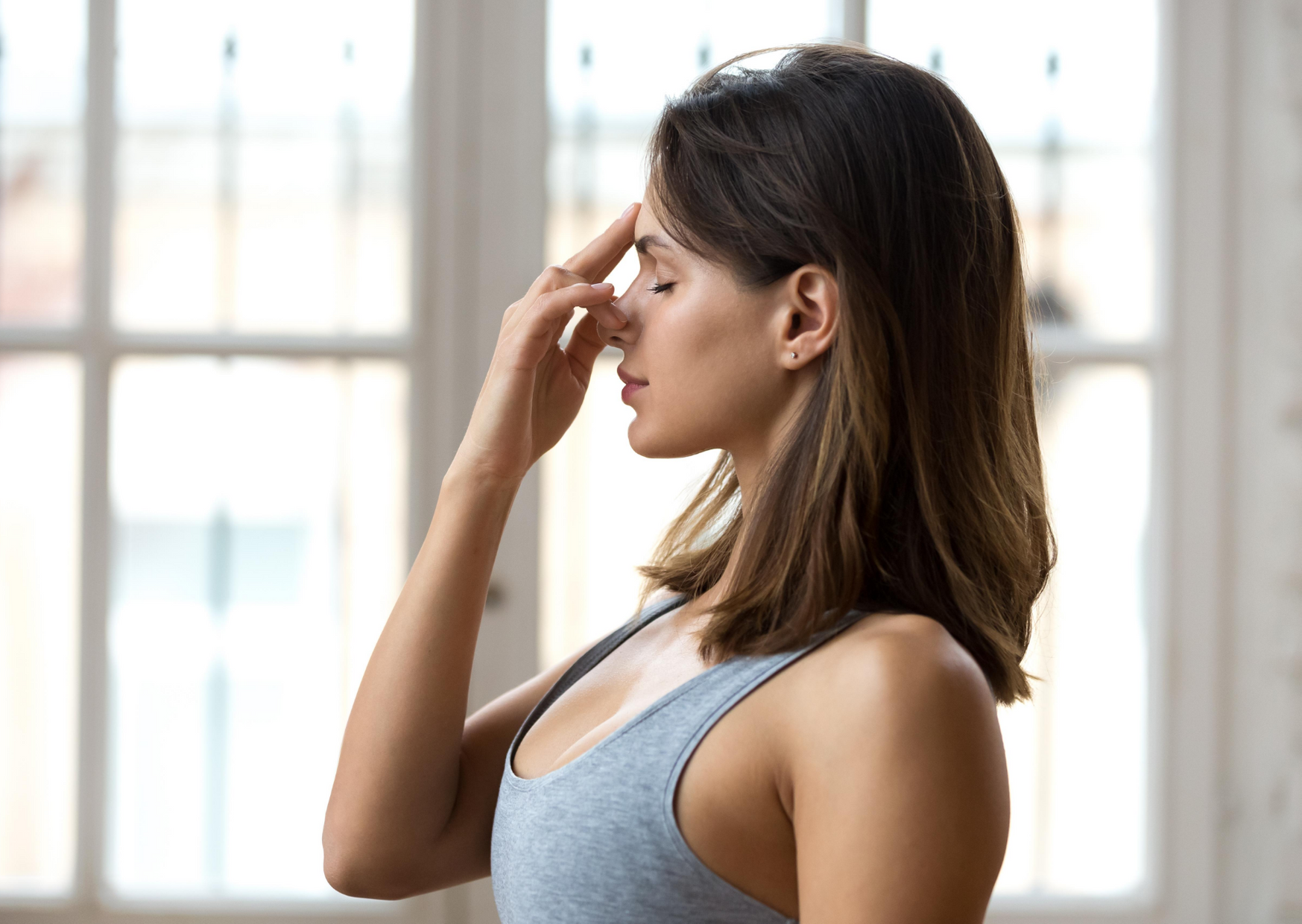The Indian Breath: 8 Types Of Pranayama Breathing Techniques And Their Benefits
The 'Indian Breath' that is as important to Yoga as poses are. Pranayama breathing techniques are described here along with their range of benefits for your health.

Pranayama breathing is both a meditative practice in itself and a core feature of yoga (on a comparable level with asanas, in terms of importance). I had no idea pranayama was a thing, until a trip in Brazil opened my eyes and a subsequent trip to India educated me on the different types of practices.
I was aware of things like yoga and meditation, but I had not heard of pranayama breathing before. I was genuinely amazed at the impact it had on me. Through simply focusing on the breath, I felt a powerful calming effect throughout my body. For that reason, I want to share these techniques with you.
What Is Pranayama Breathing And Where Does It Come From?
'Pranayama' is a Sanskrit word that loosely translates to 'control of breath'. 'Prana' means breath or life force and 'ayama' means to control. So, you can think of it as a set of practices to control the 'prana' within your body through breathing techniques.
Pranayama breathing techniques are thought to have come into existence around the same time as yoga and meditation – in India, around 5000 BC. They are recorded within ancient texts from around this time, such as the Yoga Sutras, and these texts mention pranayama as a foundational aspect of yoga practice.
Regardless of the type of pranayama breathing technique you practice, there are always three main stages:
- Purak (inhalation through nostrils)
- Kumbhak (retention)
- Rechak (exhalation)
A note: You will find these breathing techniques in both yoga practices as well as on their own, as meditative practices. The eight types of pranayama breathing techniques listed below are a quick list, starting easier and generally getting harder, to help you get started with this breathing practice and hopefully feel the benefits.
The 8 Types Of Pranayama Breathing
1. Dirga Pranayama 'Three Part Breath'
This pranayama technique got its name because when you practice it, you are actively breathing into three different parts of the abdomen. It’s probably the best pranayama for beginners, as it gets you used to filling up your lungs and meditatively breathing.
You can do it like this:
- Lay down on your back, in a comfortable position
- Breathe into the belly, watching it expand with the breath
- Just when you think it’s full, draw even more breath to fill the rib cage
- Then let a tiny bit more in and fill the chest
- Begin to exhale slowly, starting with your upper chest
- Then release from the rib cage
- And lastly, let the air go from the belly
- After completing one cycle, continue for another 10-20 breaths
2. Nadi Sodhana 'Alternate Nostril Breathing'
If you had already heard of pranayama's, or practised it yourself, then this is probably the one you’ve been exposed to. Widely known as 'alternate nostril breathing', this pranayama helps to bring balance to the three doshas of the human experience: the mind, body and soul.
In order to practice alternate nostril breathing, you need to:
- Sit in a comfortable, cross-legged position
- Place your left hand on your left knee
- Exhale completely
- Use your right hand to close your right nostril
- Inhale deeply with the left
- Close the left nostril with your spare fingers
- Open the right nostril, exhale completely
- Inhale through the right nostril, then close
- Open the left, exhale completely
- This is one cycle; repeat 10 times
It’s believed that this breathing technique helps to purify the energy channels of the body. Research has shown that alternate nostril breathing may lead to reduced anxiety, increased attention and ability to quit smoking. If you want to find out a little more about cigarette addiction, check out our article here.
3. Shitali Pranayama 'Cooling Breath'
This is a very refreshing breathing technique, hence the name 'cooling breath'. I like to do this one during the summer.
You just need to:
- Sit in a comfortable, cross-legged position
- Take a few deep inhales and exhales to prepare
- Roll your tongue in an O shape, sticking it out through your pursed lips
- Slowly inhale through the mouth
- Hold your breath and practice Jalandhar bandh (chin lock)
- Exhale through your nostrils after some time
- Repeat until you have reached between 8 and 15 cycles
Research has shown that when practised during yoga, this cooling breath technique can help to reduce anxiety.
4. Ujjayi Pranayama 'Ocean Breath'
This is another commonly used breathing technique within the current society's yoga classes. It’s meant to recreate the sound of ocean waves, hence the name 'ocean breath'. It’s a rhythmic sound which can help to focus your mind and movement using your breath.
Here is how to do it:
- Begin in a comfortable position
- Breathe through your mouth
- Constrict the back of your throat (imagine you are trying to fog up a mirror)
- Then close your mouth
- Continue to breathe through the nose, keeping the throat constricted
- This is one cycle; continue for five to ten cycles
Research has shown that Ujjayi Pranayamas can help to reduce anxiety and may be a potential alternative treatment for both stress and PTSD.
5. Bhramari Pranayama 'Humming Bee Breath'
The name gives you a good idea of how the breath should be practised – it should sound like a humming bee!
Here is how you do it:
- Find a comfortable position
- Close your ears and eyes with your fingers and thumbs
- Inhale deeply
- Then exhale slowly, making a buzzing sound like a bee
- You can also make the sound 'om' if this is easier to imagine
- Once you’ve finished the breath, you’ve completed a cycle
- Continue for 5-10 minutes
It is believed that the humming sound and vibrations naturally calm the mind and body. Research has shown that practicing the Bhramari Pranayama can lead to increased concentration, improve memory and relieve stress.
6. Bhastrika Pranayama 'Bellows Breath'
‘Bellows breath’ may be a good idea to try before the ’breath of fire’ (as seen below), as it is similar but not as difficult. The main difference is both the inhale and exhale are forceful in this breathing technique.
Here is how you can do the ‘bellows breath’:
- Sit in Padmasana (lotus) position with eyes closed and spine straight
- Inhale deeply through your nostrils
- Then exhale forcefully through your nostrils, using the diaphragm to 'pump'
- Inhale and exhale forcibly about 10 times (or whatever feels comfortable)
- Then take a deep inhale
- Hold the breath in for as long as you can
- Slowly release the breath with a deep exhalation
- After completing this cycle, you can rest with normal breathing, then continue for another three to five cycles
Research has shown that this pranayama breathing technique can help with worry and tolerance of anxiety, as well as with PTSD.
7. Viloma Pranayama 'Against The Wave'
This pranayama breathing technique also involves an alternation. It is divided into two variations: paused inhalation and paused exhalation.
Here is how you do it through paused inhalation:
- Lie down in a comfortable position and relax
- Inhale for two to three seconds and then pause
- Restart inhalation after a pause of two seconds
- Repeat the process until your lungs are full
- Exhale slowly
- That's the cycle complete; repeat for three to five minutes
And here is how you do it through paused exhalation:
- Lie down in a comfortable position and relax
- First, inhale slowly
- Then exhale for two to three seconds and pause
- Restart exhalation after a pause of two seconds
- Repeat the process until your lungs are empty
- Inhale slowly
- That's the cycle complete; repeat for three to five minutes
Research has shown that practicing Viloma Pranayama's can help you to relax, be less anxious for tests and help to reduce stress.
8. Kapalabhati Pranayama 'Skull Shining Breath' & 'Breath Of Fire'
Instead of the Shitali Pranayama cooling you down, you can use Kapalabhati Pranayama to warm yourself up. This pranayama breathing technique involves an involuntary deep inhalation and forceful exhalation. It’s a common practice within kundalini yoga.
Since this technique is common within yoga, your instructor can help you, but here are the basics:
- Rest your hands on your knees, bringing awareness to your belly
- Inhale through both nostrils deeply
- Exhale forcefully (to start, you can use your hands to gently press on your belly)
- Inhalation should then happen naturally
- Focus on exhalation, inhalation should be passive
- To begin, aim for 65-70 cycles per minute, and if you are comfortable doing so, you can work your way up to 95-105 cycles per minute
- A cycle is an exhalation and inhalation together; to start with, try this technique for just a couple of minutes
In terms of physical benefits, it helps to strengthen the diaphragm and abdominal muscles. In terms of mental benefits, it helps to increase focus and reduce anxiety.
Note: This specific pranayama is better for experienced people, so it’s best to proceed with caution. If you are trying it for the first time, try it with a supervisor. If you feel light headed, you should stop. You should also avoid this pranayama if you are pregnant, on your menstrual period or have high blood pressure.
A Reminder Of The Benefits Of Pranayama Breathing For Your Health
Throughout the article, we have referenced some articles that have shown the positive effects of pranayama breathing techniques for our health, both physical and mental.
Here is a quick reminder.
- Reduction in stress and anxiety
- Increased lung function and capacity
- Improved cardiovascular health
- Improved concentration
- Management of blood pressure
If you want to get some tips on how to be less anxious using other meditations and techniques, subscribe to Stresscoach below, or better yet, try out the Stresscoach app.
Learn to manage anxiety in only 5 minutes per day
